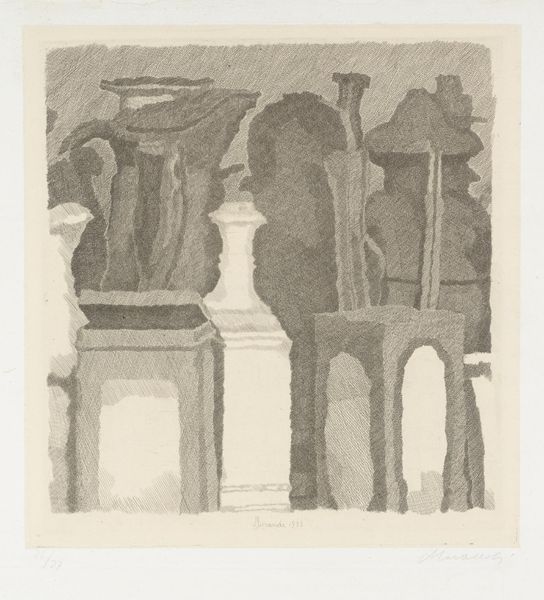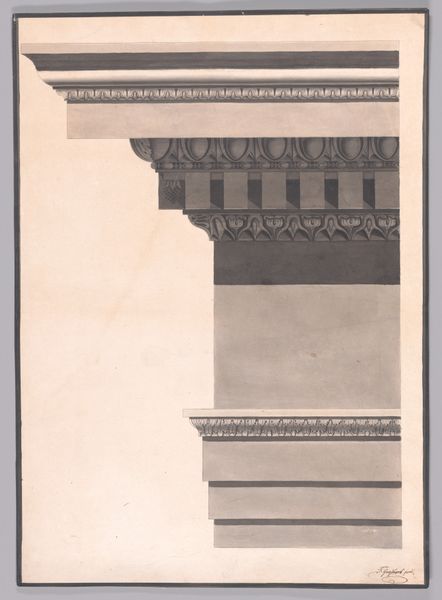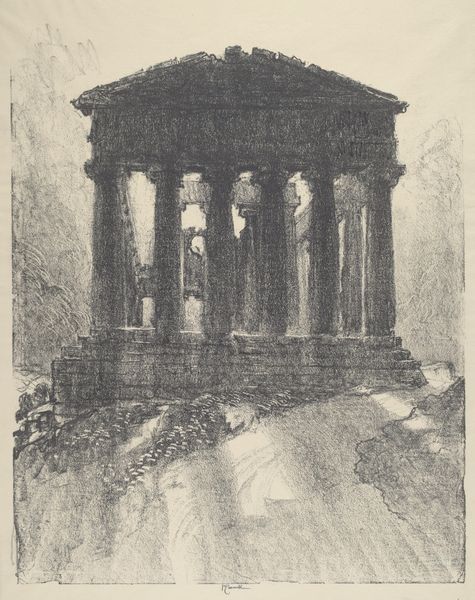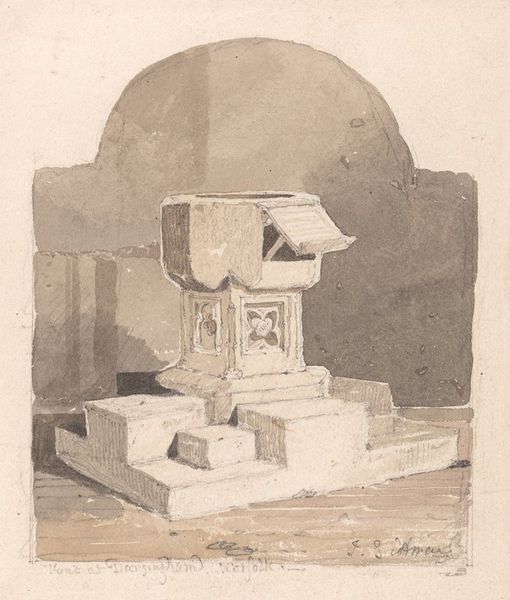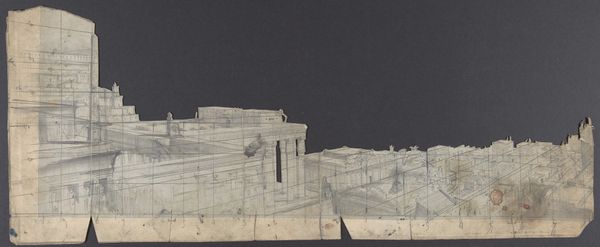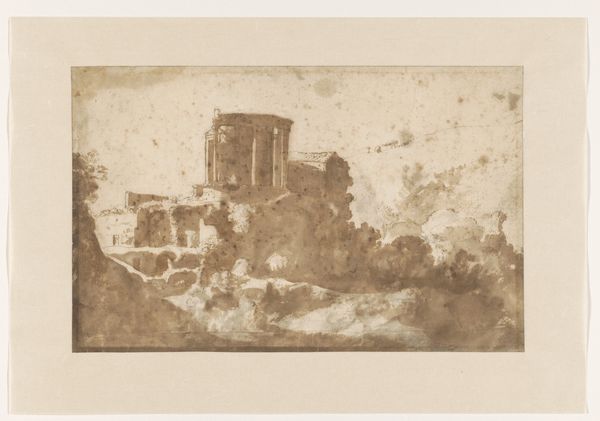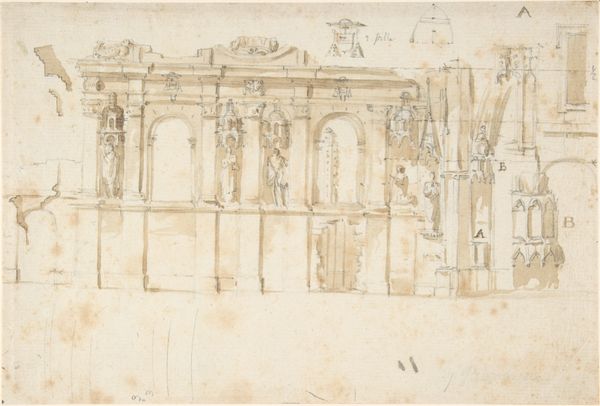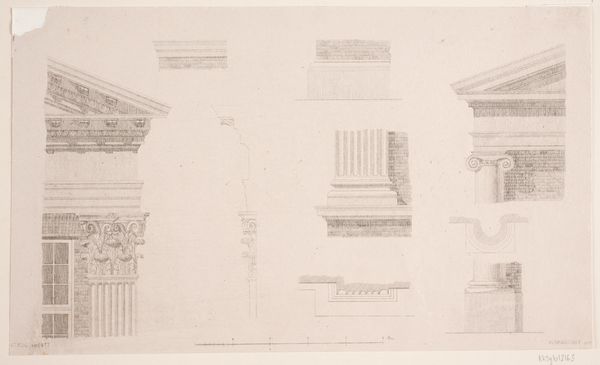
Twee stukken van een architraaf van de antieke tempel in de oude stad Manduria 1778
0:00
0:00
louisducros
Rijksmuseum
drawing, tempera, intaglio, watercolor, architecture
#
drawing
#
tempera
#
intaglio
#
greek-and-roman-art
#
landscape
#
etching
#
watercolor
#
architecture drawing
#
watercolour illustration
#
architecture
Dimensions: height 244 mm, width 188 mm
Copyright: Rijks Museum: Open Domain
Curator: This watercolor and tempera drawing, dating back to 1778, is by Louis Ducros. It's titled "Twee stukken van een architraaf van de antieke tempel in de oude stad Manduria"—Two pieces of an architrave from the ancient temple in the old city of Manduria. It depicts architectural fragments, almost ghostly in their muted tones, and it now resides in the Rijksmuseum. Editor: What strikes me first is the stillness, an almost meditative quality. These ruins, rendered in such delicate washes of grey and beige, feel less like historical artifacts and more like whispers of time itself. The emptiness evokes the solemnity of what once was. Curator: Ducros was part of a wave of artists and architects keen to document classical antiquity in Italy. What makes Ducros notable, however, is the scientific eye he brings to these documents, creating almost exact records of these ruins with detailed accuracy. The image’s purpose was disseminating this classicizing architectural design, fueling a passion for neoclassical taste across Europe. Editor: Exactly, there's something heartbreaking about its scientific precision. Ducros sought to capture every detail, every groove of these aging stones, almost trying to suspend their fate, whereas, from our standpoint in the present, all efforts were for nothing. Now, only the artwork is present as evidence, with few clues for where these remnants once belonged. What do you think? Curator: It makes me consider the market for classical antiquity and art at the time, which provided contexts that encouraged the circulation of art and artists across Europe. But it makes me sad that Ducros, working in the eighteenth century, could only render ancient Greek art through a romantic vision and stylistic constraints. This wasn’t really “archaeology” as we understand it now— excavation and rigorous cataloguing hadn’t quite taken hold yet. Editor: Do you think the use of watercolor adds to the almost unreal or dreamlike quality? Because it does for me. This ethereal touch allows us to meditate not just on antiquity, but on the fragility of memory, how what is solid melts into air. Curator: Yes, perhaps that was the secret agenda behind these Neoclassical movements; people were trying to revive these lost ruins but it seemed almost absurd, with artists taking the time and effort to make art based on old structures as those relics turned into rubble! What remains instead, ironically, are these aesthetic records. Editor: It makes me appreciate that the emotional intensity with which Ducros approached the temple still comes across, even centuries later, even knowing the context and intentions that lie underneath. I came away learning something, after all. Curator: Me too, and perhaps more about us than them. Thank you.
Comments
No comments
Be the first to comment and join the conversation on the ultimate creative platform.
